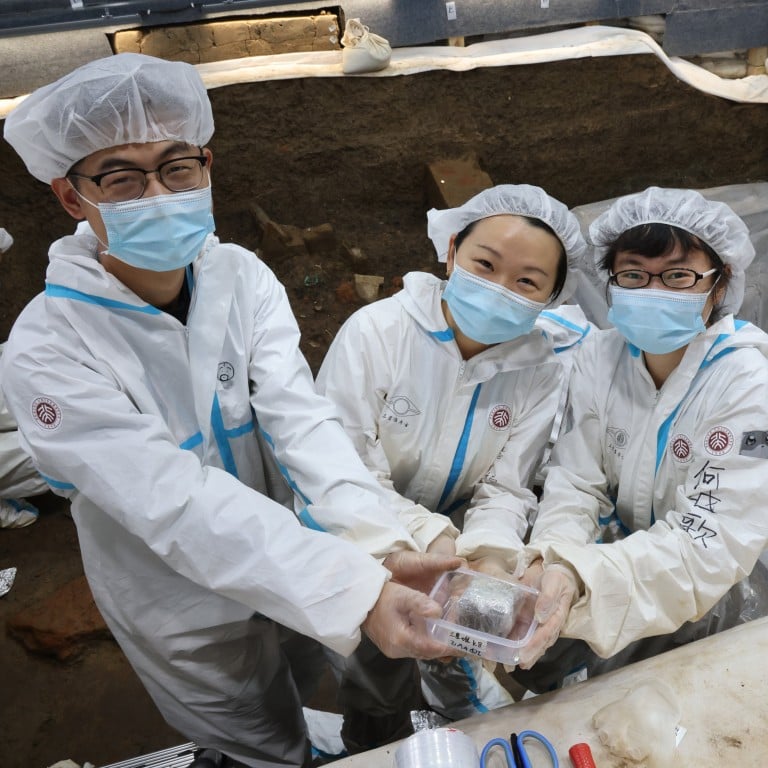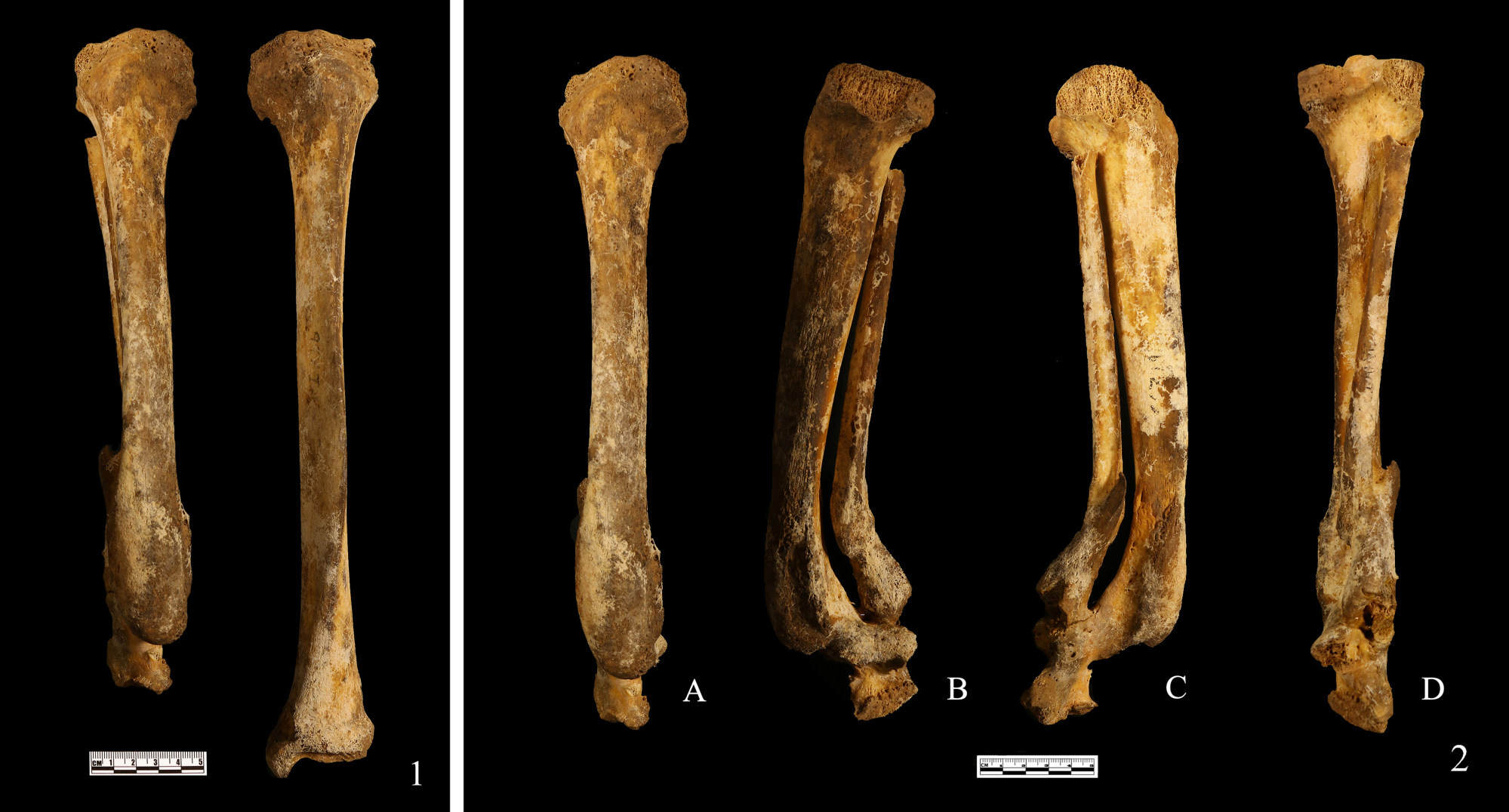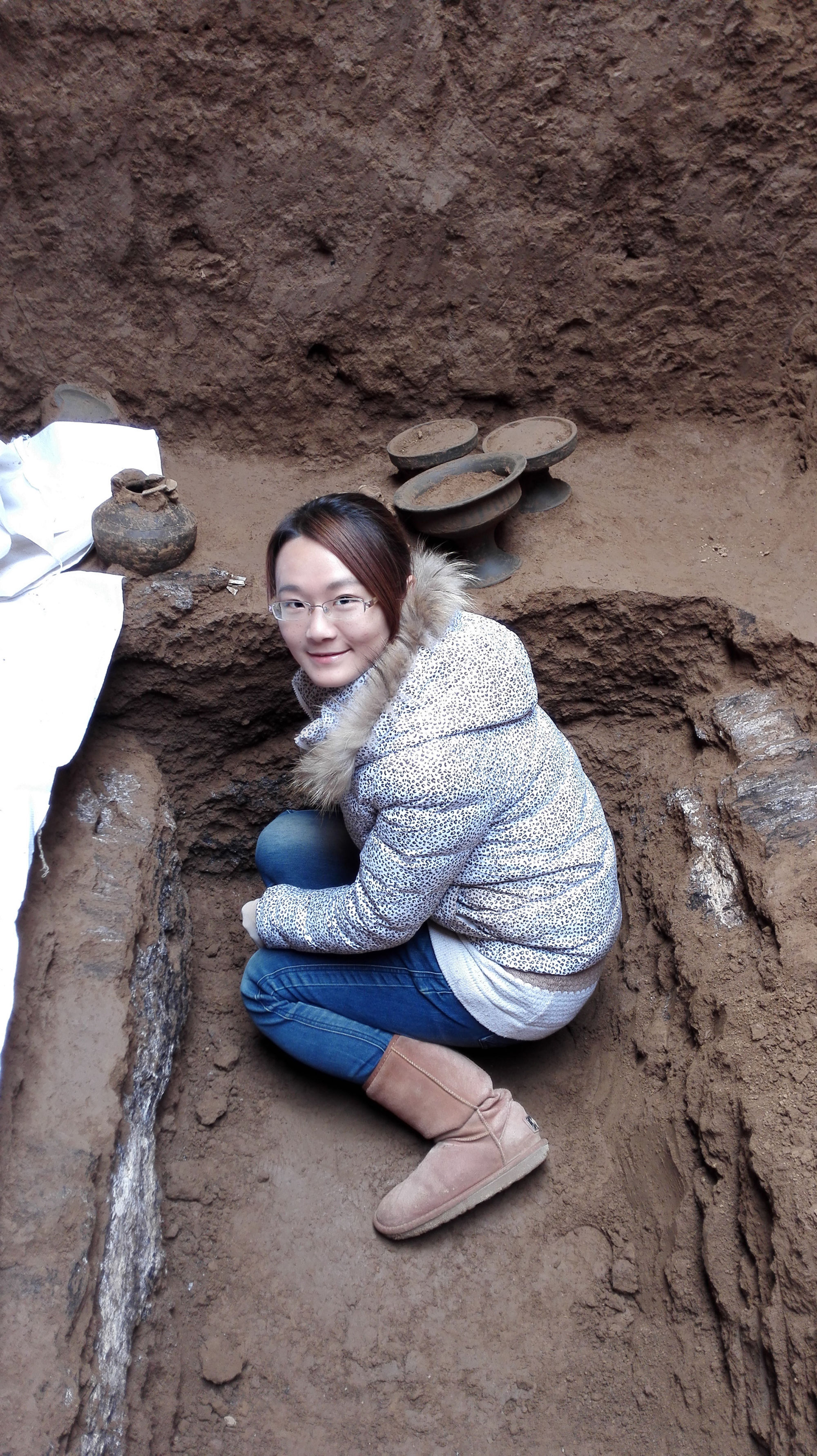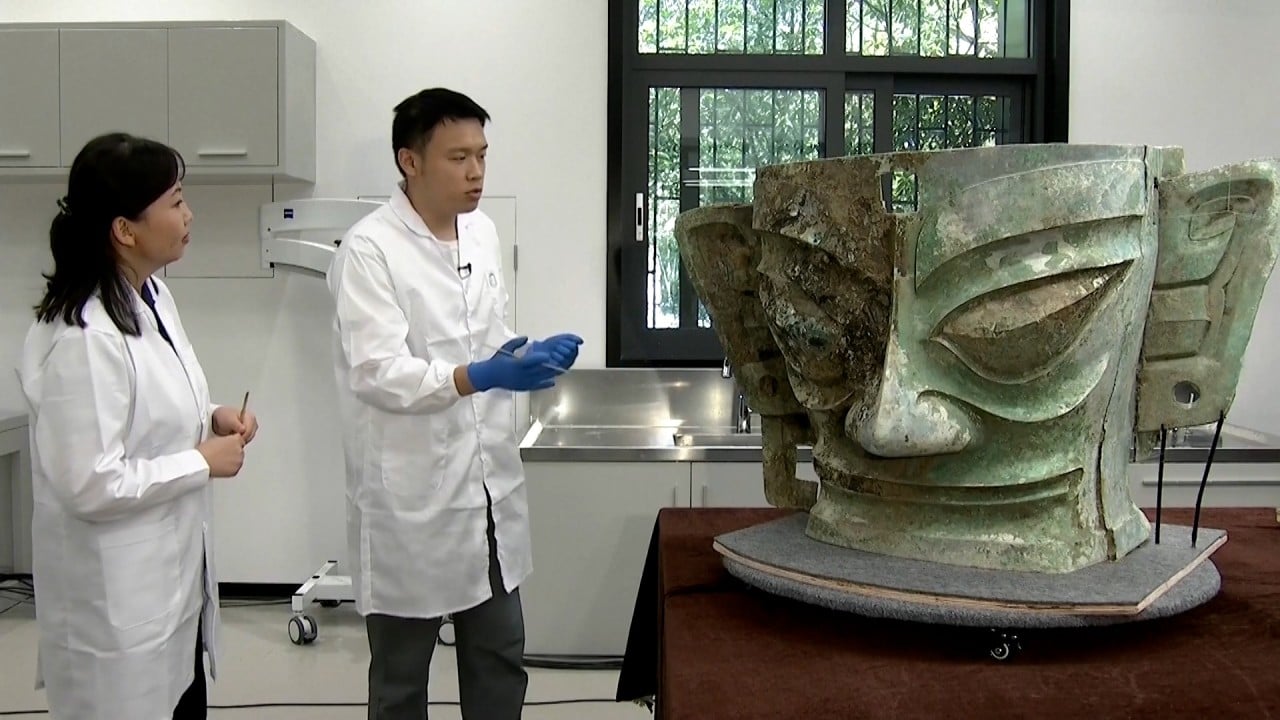
Researchers say they have found skeleton of ancient Chinese criminal who had her foot cut off almost 3,000 years ago
- Amputation, or ‘yue’, was one of the five criminal punishments used in ancient China
- Modern scientific analysis has ruled out a medical reason for the amputation and say the woman could be the oldest known victim of the practice
Chinese researchers have identified what they believe is the earliest known example of someone’s foot being cut off as a punishment, based on analysis of a skeleton found in a tomb in the northwest of the country.
The team from Peking University said a biomedical examination of the remains of the woman ruled out medical or other reasons for the amputation and said the victim had lived for at least five years after the punishment had been carried out.

Cutting off one or both feet, a practice known as yue, was one of the five punishments of ancient China – a particularly draconian system that was in place for almost a thousand years until around 200BC.
There is plenty of evidence for the practice in historical records and artwork.
In the oldest written Chinese records, the Shang dynasty’s (c1600-1050BC) oracle bone inscriptions, some of the images look like a foot being cut off with a saw, the initial form of the character for yue.
Engravings on bronze vessels from the Western Zhou era – from around 1046BC to 771BC – include images of people missing one or both legs acting as gatekeepers, a practice that is also mentioned in literature.
During the later Spring and Autumn period it was reported that the punishment was so widely used that the price of special shoes for amputees rose because of the heavy demand for them.
The archaeologists found the body at a tomb in the cemetery at a site called Zhouyan near Baoji in the northwestern province of Shaanxi.
The site, the birthplace of the Zhou civilisation, is known as the “hometown of bronzes” because of the large number of vessels that have been found there, along with oracle bones and tombs.

The amputee’s body was found during excavations that began in 1999, but was set aside without much in-depth study of the bones because the archaeologists were more interested in finding artefacts and there were few uncovered at the site.
But Li Nan, a postdoctoral researcher at Peking University and lead author of the study published in Acta Anthropologica Sinica, said recent scientific and technological developments had made further study of the remains worthwhile.
“People only regarded this human bone as an incomplete bone before, but when I had a certain knowledge reserve, I thought at first sight that it might be a case of amputation,” she said.
“I excitedly went to the hospital and made an appointment with an orthopaedic doctor. When I took out the tibial remains, the doctor was really shocked.”
An X-ray analysis concluded that the remains were those of a woman aged 30 to 35 whose right foot had been removed – something that suggested her crime was regarded as serious.
Sometimes patients with diseases such as diabetes, leprosy and cancer, who had suffered frostbite or burns, had their limbs removed.
But a study of the bone density and structure of other parts of the skeleton ruled out disease.
The amputation had also caused serious deformities to the tibia and fibula – something that suggested it was not a medical operation because those leave wounds that are relatively flat and smooth.
Some suspected amputees from the earlier Shang dynasty have been found, but those appear to have formed part of a sacrificial ritual – a practice banned under the Zhou – where prisoners of war were killed or servants, concubines, soldiers and other retainers were buried with an important leader to serve them in the afterlife.
“Combining the biomedical analysis of the tomb occupier and the yue amputees images engraved on bronze vessels unearthed from nearby tombs, it can be basically determined that this is an example of the yue penalty and is the earliest known example,” Li said.
A 3,500-year-old Chinese wine jar sells for over US$1.5 million
“There is a very important provision of the yue penalty: the left foot will be amputated for light offenders, while the right foot will be cut off for heavy offenders. It seems that the tomb owner committed a felony,” Li added.
Many of those subjected to the punishment died as a result and survivors lived miserable lives, being shunned and looked down on by others, and often struggled to make a living. Traditionally, many were employed as gatekeepers to places where animals and birds were kept – an implicit insult that they were only fit to live with beasts.
The researchers found the victim did not die immediately but lived for at least another five years before dying of an unknown cause.

One possible explanation is that she had not been abandoned by her family and so received better care.
This is the first well-studied amputation case from an archaeological site, which provides valuable materials for the study of the penal system and social customs in ancient China.

